Pelikan Magnum in detail
The Pelikan Magnum is a very interesting and special pen. The pen was only sold to Portugal. It is not known, why this special model was introduced there and not for the other markets, too.
Let's have a look at this pen in detail.
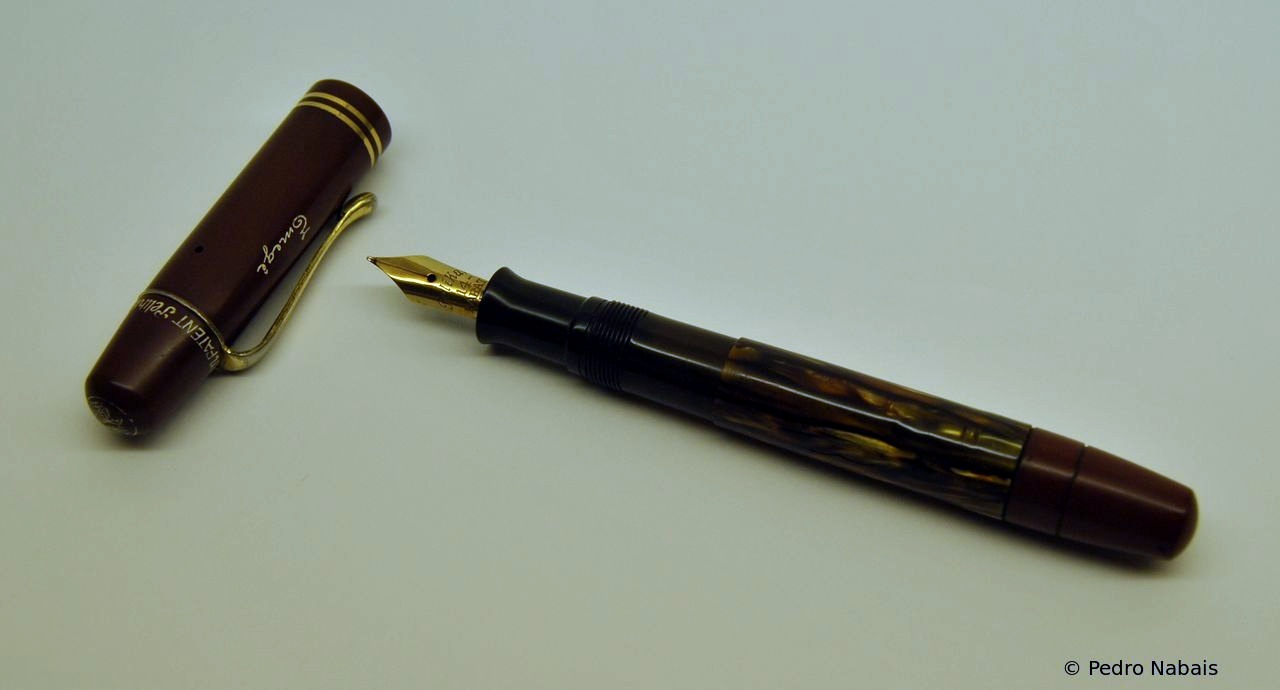
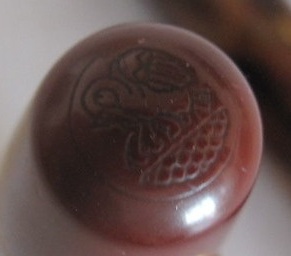
Old Pelikan logo with 4 chicks in the nest
Pelikan Magnum as the predecessor of the Pelikan 100N
The Pelikan Magnum is mentioned on page 49 and 50 of "Pelikan Schreibgerate 1929-2004" from Mr. Dittmer and Mr. Lehmann.
There is an delivery document where 1600 Pelikan Magnum was ordered with the EMEGE imprint at the cap top.
This order was placed by the company "Monteiro Guimarães, Filho, Lda" in 1935 and was delivered by Pelikan in 1936.
So the Pelikan Magnum is prior to the 100N and was never called Pelikan 100N Magnum (can be seen on the delivery document).
Pelikan 100N was released in March 1937 for export and in March 1938 for the German market. The Magnum is therefore prior to the 100N.
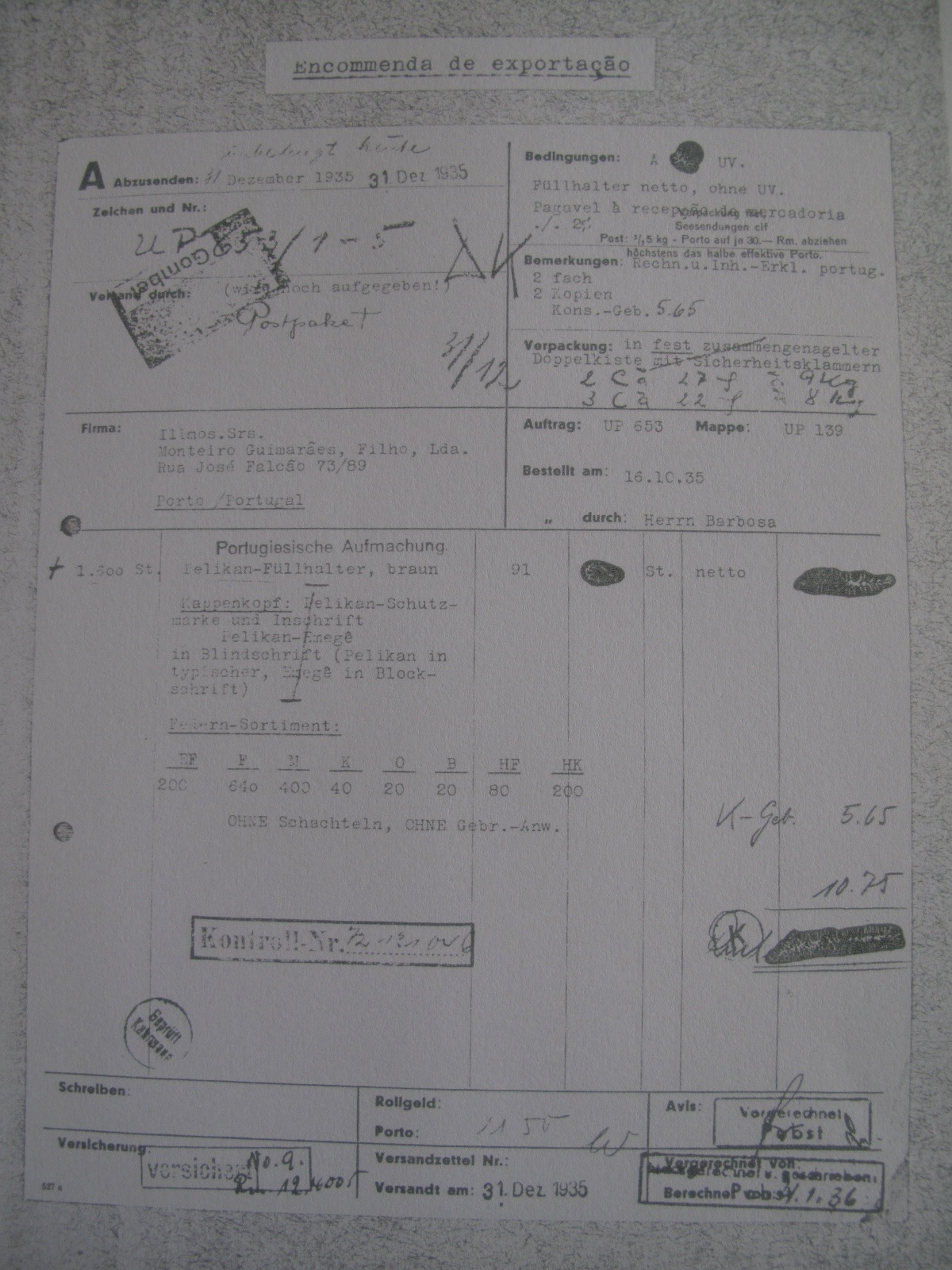
EMEGE Lettering

No pens were ever produced in Portugal, as some say.
Monteiro Guimarães would mark the pens (100, 100N and the first Magnum model) with "Emege" in cursive in the cap or sleeve. But they did not put the markings on the first Magnum model, which has EMEGE in the cap top in block letters (In German: "Blockschrift").
Those markings were made at the Pelikan factory as indicated in that delivery document referred above. That was probably because it wasn't easy to make the imprint around the cap top, because of the need for even spacings between the letters.
In Portuguese MG, the initials of Monteiro Guimarães are phonetically:
M ----> EME
G ----> GE
Therefore the EMEGE imprint.
There is a theory that says that Monteiro Guimarães engraved the pens so that they could know the pen had been sold by them and therefore give full warranty only to those. This is very odd to me as they were the only importer and official Representative for Portugal, Spain, Brasil, and Portuguese African countries (then Angola, Moçambique, Guiné Bissau, Cape Verde and São tomé e Principe), so all the pens found in Portugal would have been imported by them. Monteiro Guimarães had then re-sellers all across the country and in those foreign markets they covered.
This is why I don't see the need to mark the pens only because of warranty issues. It sound to me more that they wanted their brand name also on the pens for marketing reasons.
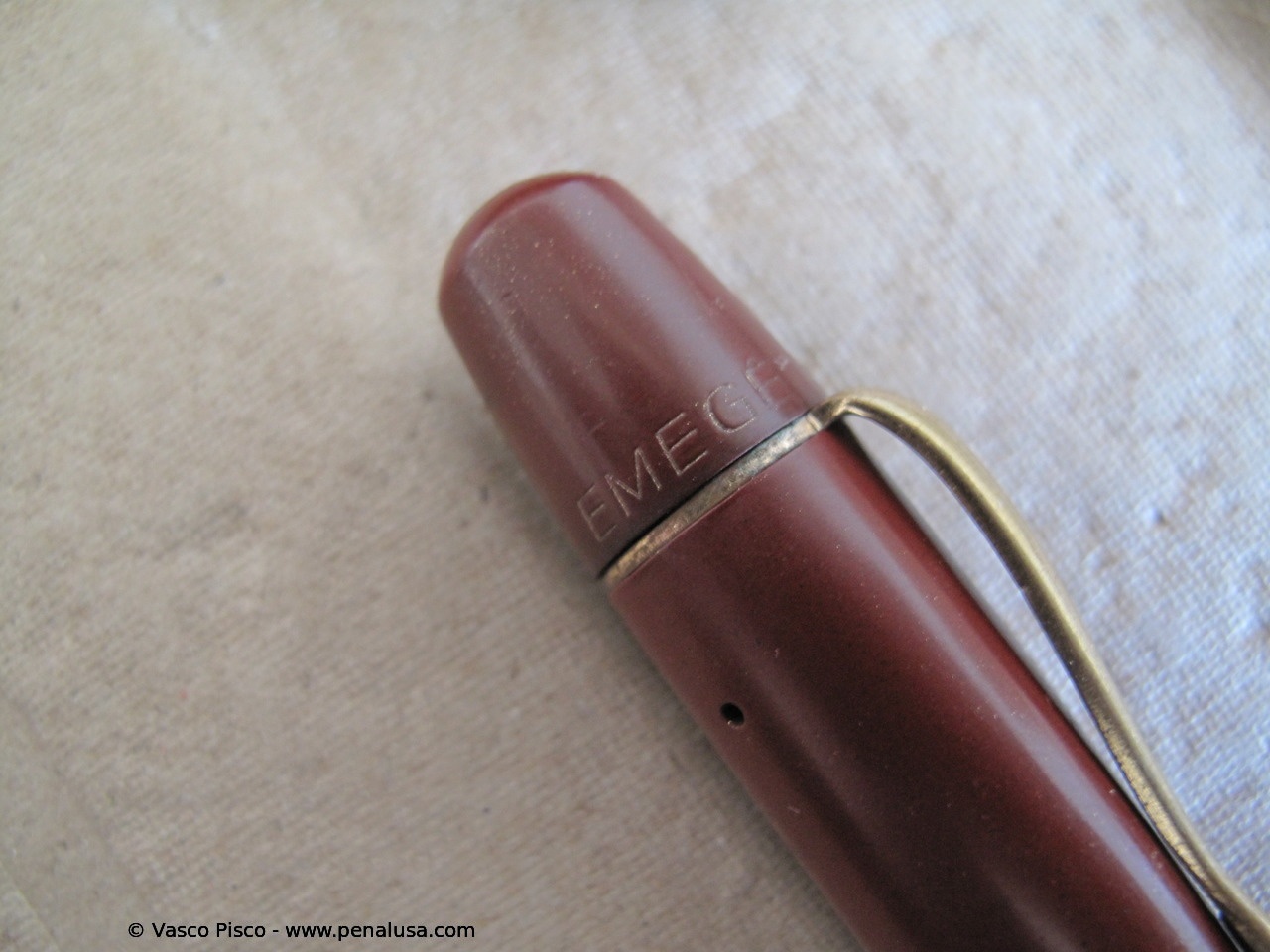
Detail comparison between Pelikan Magnum, 100 and 100N
Let's have a small technical comparison between the Pelikan 100, the Magnum and the Pelikan 100N.
Part from the arguments concerning the Portuguese order of 1600 Magnum pens with EMEGE (capital letters) engraved around the CAP TOP (see above) there are more arguments that make me believe the Magnum was the predecessor of the 100N.
Pelikan Magnum is aesthetically closer to the Pelikan 100N but I believe that the Pelikan Magnum shares more technical similarities with the Pelikan 100 than with the 100N. This makes me think, it was produced alongside with the Pelikan 100 and before the 100N.
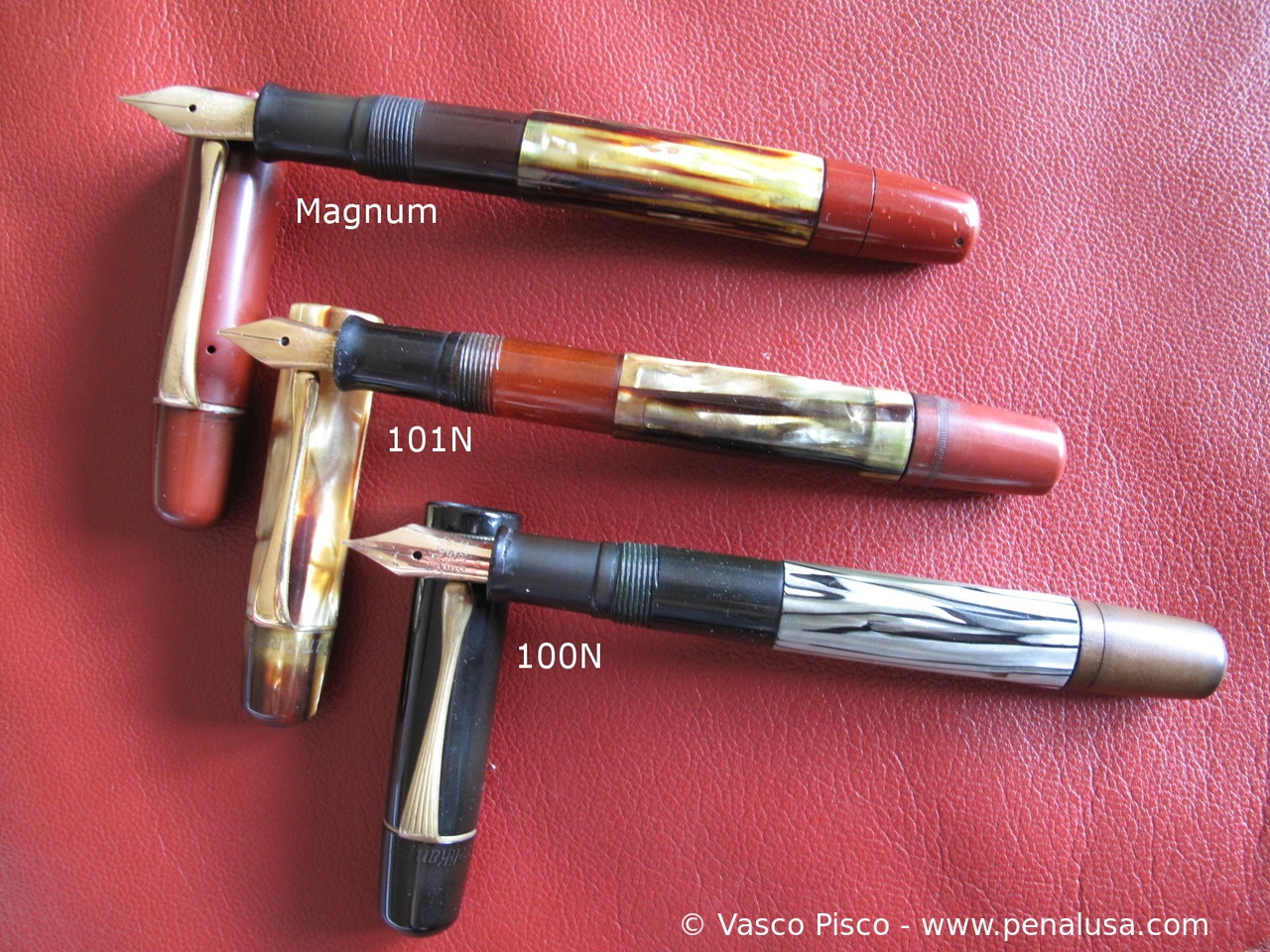
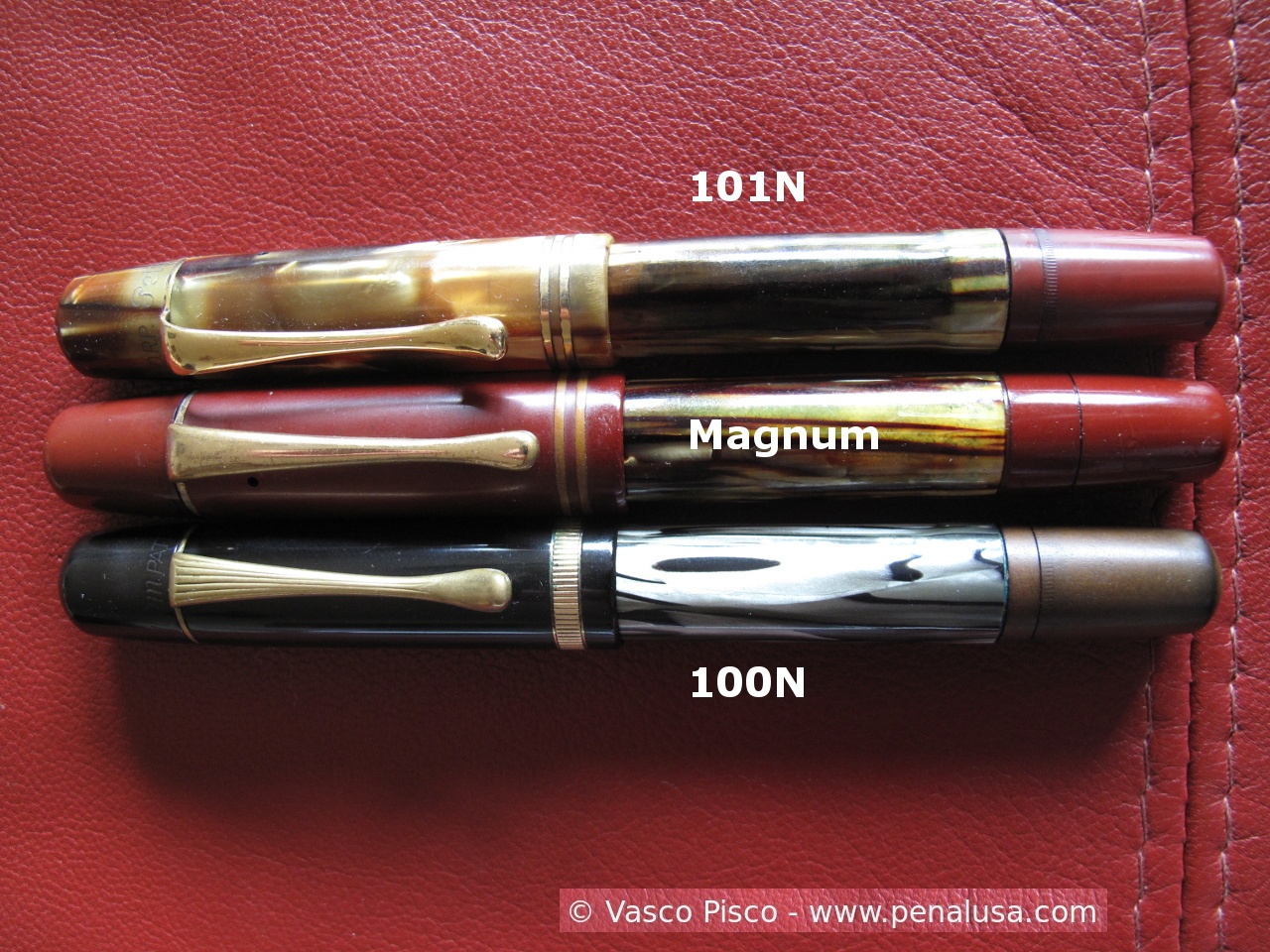
Pelikan Magnum Nib
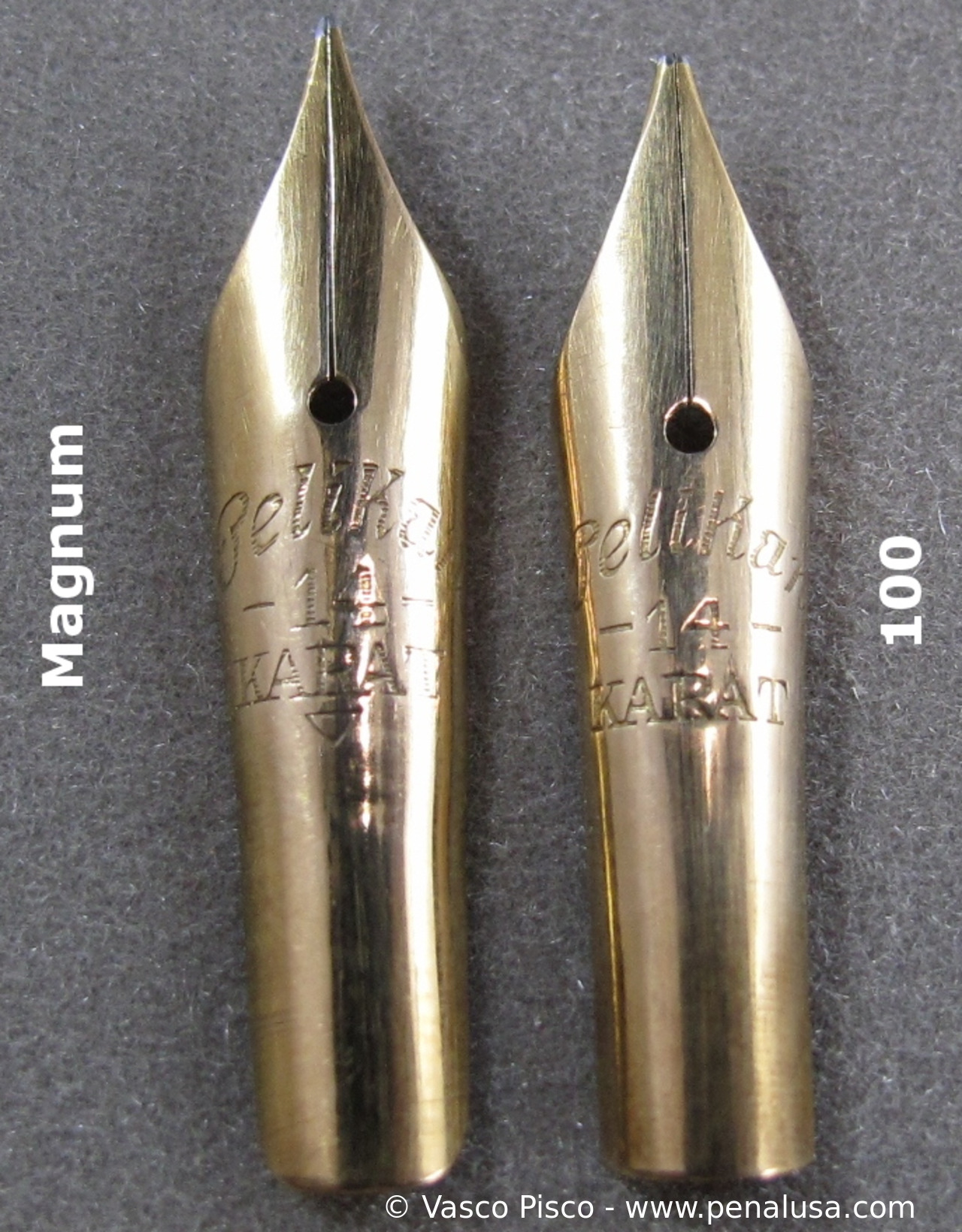
I list my comparison below with some pictures to illustrate:
The Magnum nib is very similar to the earlier Pelikan 100. The etching pattern with horizontal parallel lines of the engraved Pelikan -14- Karat is the same as the one found on the early Pelikan 100 produced from 1930 to 1937. As to size Magnum is just a fraction longer and wider. The major difference is that it has engraved one triangle in the base of the text. Remember that Pelikan Magnum, according to the Portuguese delivery document, started production at least in the end of 1935.
Early and late Pelikan 100N nibs never used the horizontal parallel pattern.
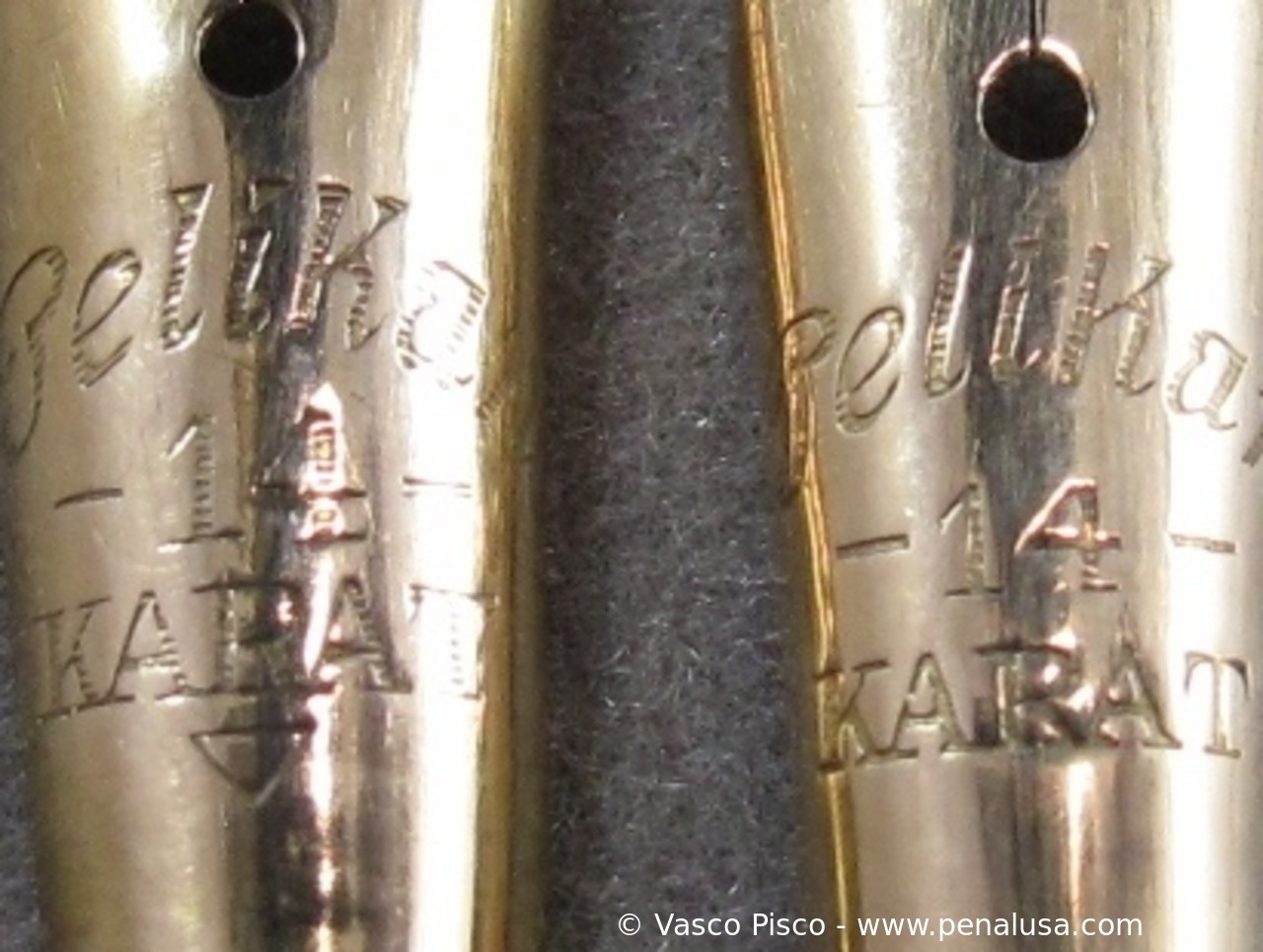
Pitch of the spindle
Again the Pelikan Magnum and Pelikan 100 share the same technical specification and use the same thread per inch, as can easily be seen in the picture below. Pelikan 100N (on the right) uses a totally different thread.
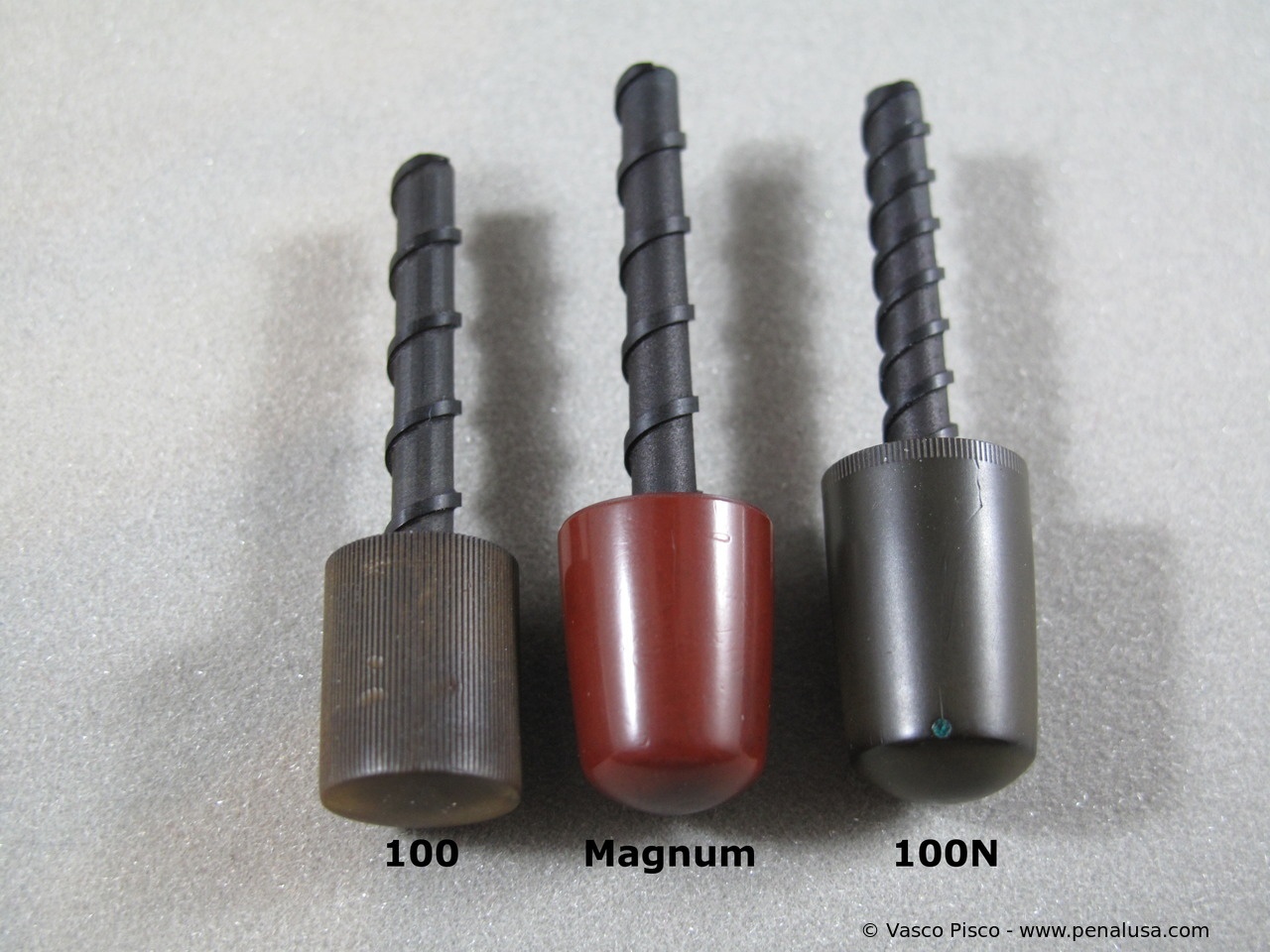
Rotating arrow
An arrow imprint indicates the rotating side on the Pelikan Magnum. The filling knob is not in good condition, so the arrow isn't easy to see in the picture, but it's there. Pelikan 100N never used the arrow imprint that I know of.
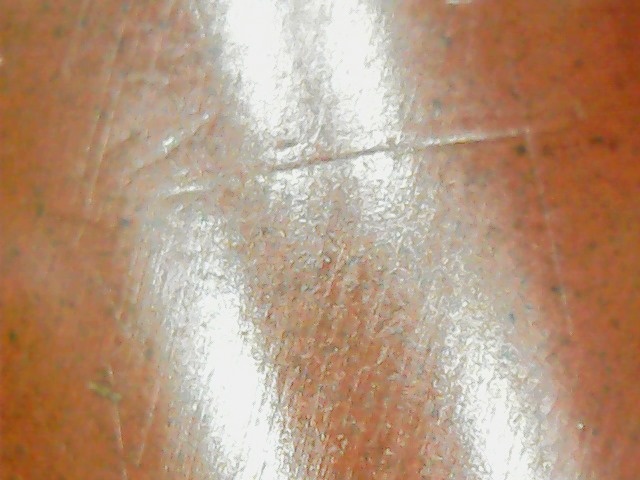
Mechanics
A few details to examine at the piston mechnanics of the three pens:
- Piston guide / cone
Again this part of the Magnum shows more resemblance to the Pelikan 100 than to the Pelikan 100N pen. The cone (the visible part of the piston guide) is larger when compared to the shorter cone used in the Pelikan 100N. - Piston
The piston (the tube where the spindle runs) is similar on the Pelikan 100 and Magnum, as can be seen in the picture. - Screwed disk to hold the cork on the rod
Still in the same picture, the piece used to hold the cork in place (a disk at the end of the piston rod) is also similar on both Pelikan 100 and Magnum. This piece that you can see in the top of the shaft holding the cork, is locked in place only by a tight pressure fit, it does not have a left thread like the Pelikan 101N (at the picture on the right).
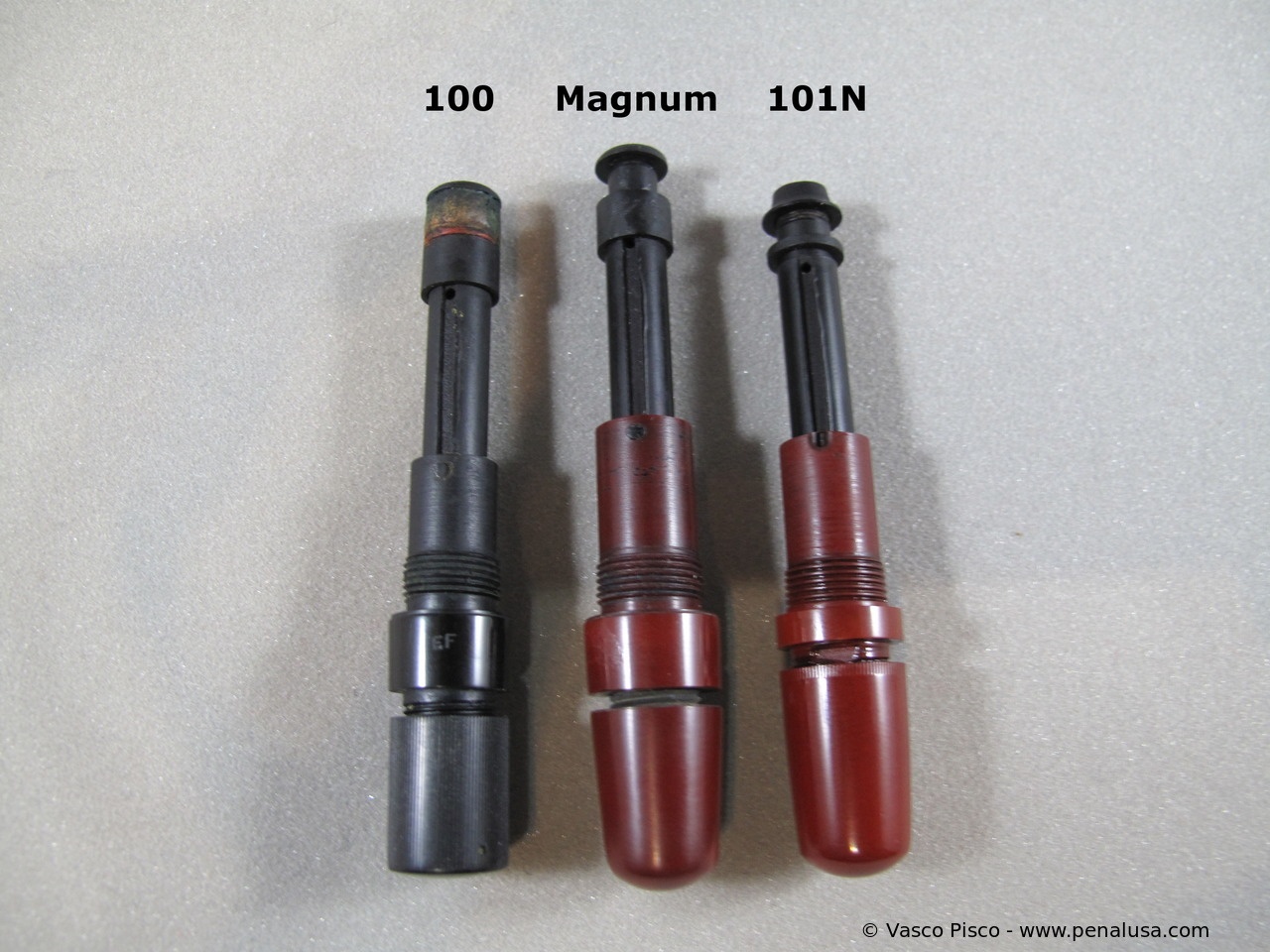
Similarities of all three pens
There are other technical similarities that are shared by all 3 pens, like the metallic ring used to reinforce the celluloid barrel in all early Pelikan 100, Magnum and Pelikan 100N.
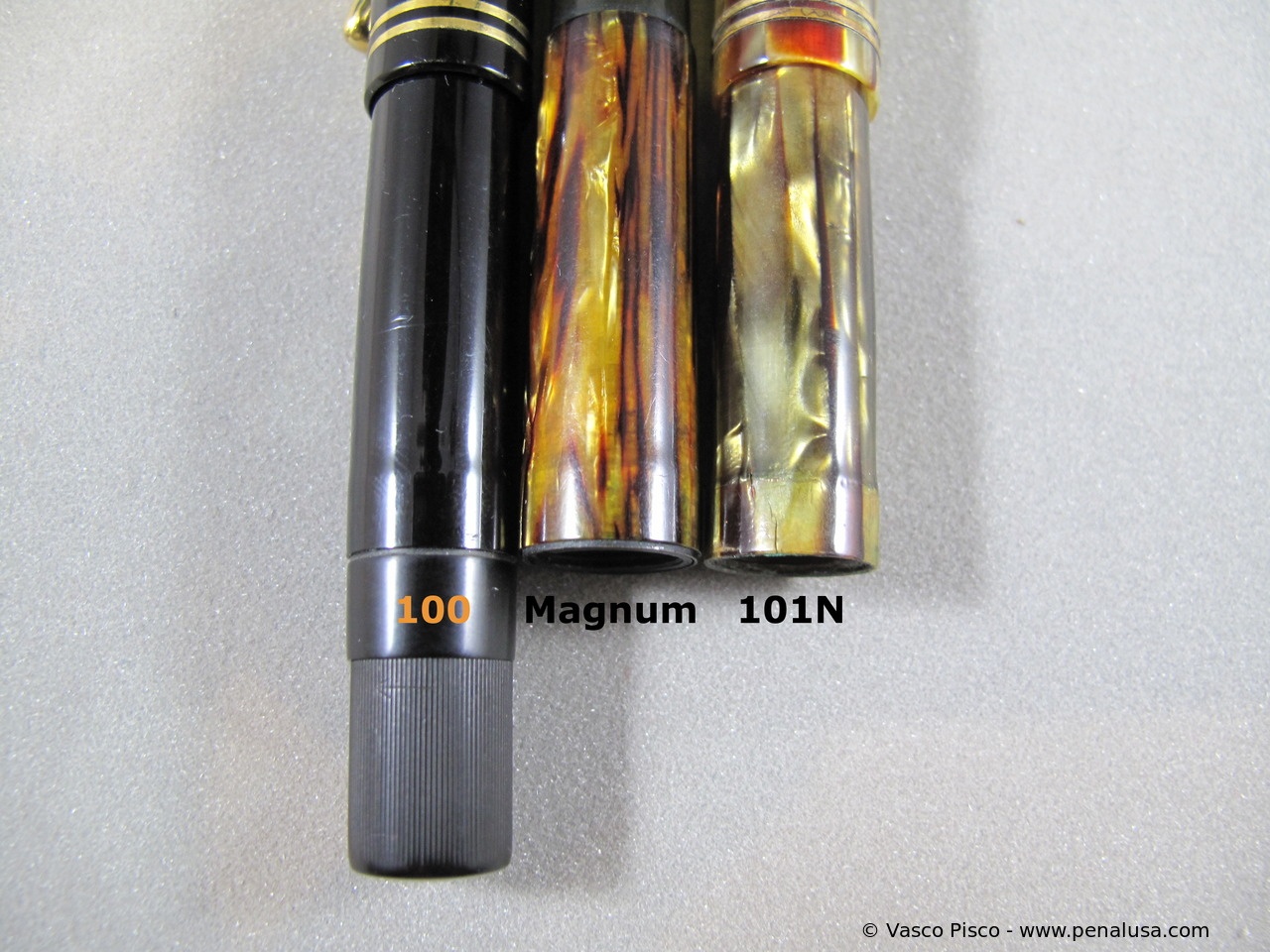
Résumé
Was Pelikan Magnum only sold in Portugal? I have no knowledge of Pelikans Magnum being found outside Portugal, Brasil or the former Portuguese African colonies (all countries where Monteiro & Guimarães was the Pelikan representative/importer) but.
How was the Portuguese importer able to have a unique model produced and engraved with his name by Pelikan itself?
This is a mystery I would love to know more about!
Did Pelikan use the Magnum as a prototype for the Pelikan 100N? I believe so and also feel that the Magnum is a Pelikan pen model by itself and not a Pelikan 100N variant.
This article was kindly provided by Vasco Pisco
Check out "Pena Lusa by Piscov". Pens added on a regular basis!
For a good exchange the forum The Fountain Pen Network - FPN.



